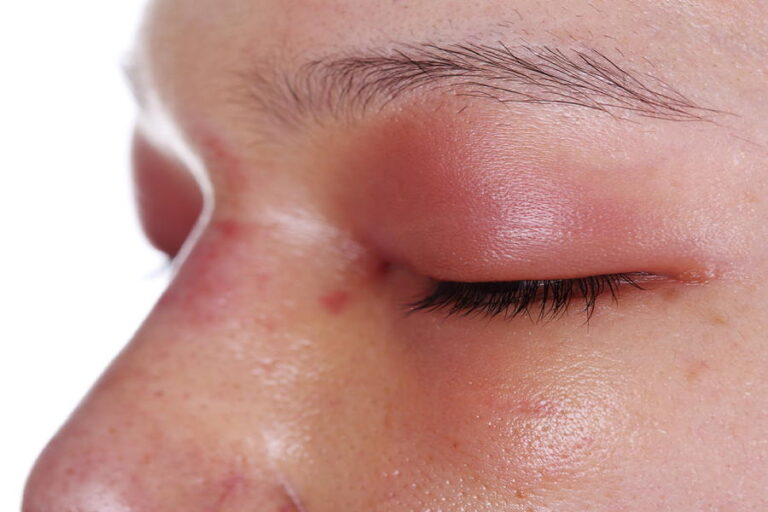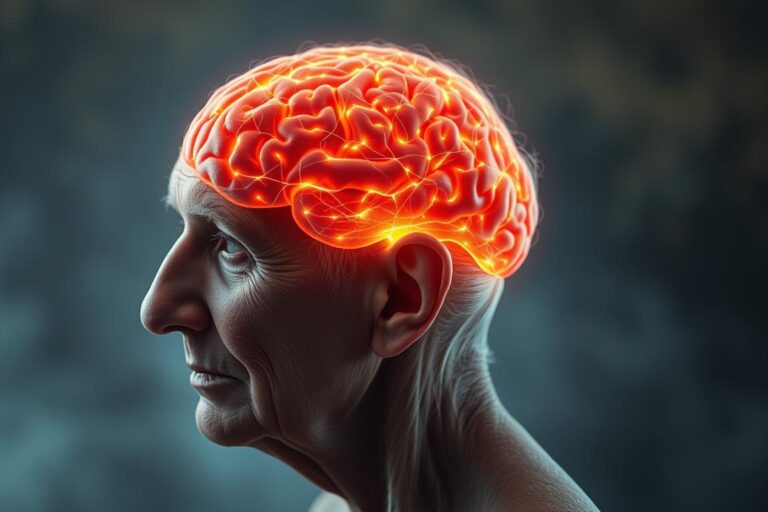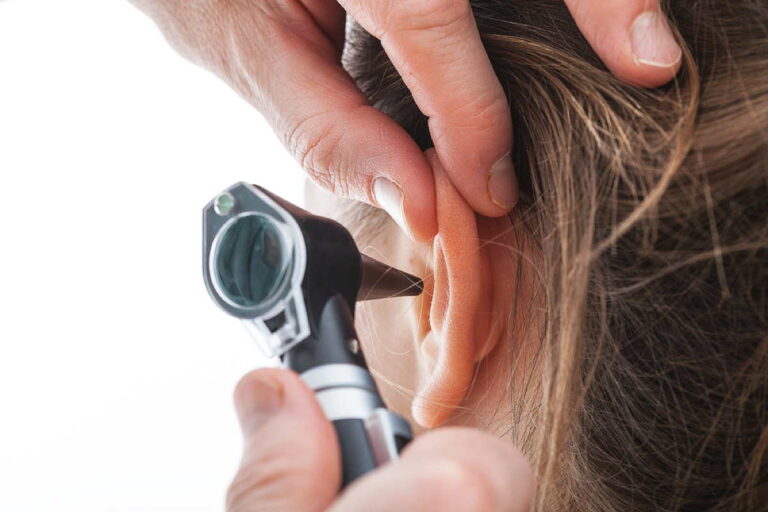Electrosensitivity – myth or measurable exposure?
Did you know that in a Swiss QualoMobil study, 9.5% of participants reported feeling affected by mobile phone radiation, although no measurable health effects were found? The debate about electrosensitivity or electromagnetic hypersensitivity is characterized by uncertainty and controversy. While some experts see electromagnetic fields as a potential health risk, others suspect that the symptoms of those affected are psychosomatic. Research into this topic is essential in order to be able to make well-founded statements about whether electromagnetic hypersensitivity actually represents a measurable burden or whether it is more of a myth.
Important findings
- 9.5% of participants in a Swiss study reported feeling impaired by mobile phone radiation.
- Based on findings, the German Commission on Radiological Protection rules out the possibility that “electrosensitivity” does not exist.
- A study by the University of Essex suggests that symptoms of electromagnetic hypersensitivity occur independently of active electromagnetic fields.
- Products to protect against electromagnetic fields such as harmonizers and stones have no scientifically proven effect.
- Electromagnetic fields cannot be harmonized, neutralized or converted into harmless frequencies.
Can electromagnetic fields harm us?
Electromagnetic fields (EMFs) are all around us. They come from both natural and man-made sources and include low-frequency fields such as those generated by high-voltage power lines, as well as high-frequency fields such as those emitted by cell phones and Wi-Fi. There is an ongoing debate about the potential health effects of these fields.
Health effects of low-frequency fields
The low-frequency fields that occur in households and overhead power lines generate electrical currents in the human body. In 2011, the International Agency for Research on Cancer (IARC) classified these fields as “possibly carcinogenic”. However, these findings have not been confirmed by further studies. The German Commission on Radiological Protection (SSK) and the International Commission on Non-Ionizing Radiation Protection (ICNIRP) emphasize that the current limits are safe and do not pose any health risks.
Interactions of high-frequency fields
Radiofrequency fields from cell phones, Wi-Fi and other wireless technologies are known to heat tissue. Mobile phone radiation, which is one form of these fields, has been classified as “possibly carcinogenic” by the World Health Organization (WHO). However, studies such as the MOBI-KIDS study, which was conducted from 2010 to 2021, found no increased risk of brain tumors from cell phone use. In addition, radiofrequency fields do not pose a risk with regard to the coronavirus.
Differences between natural and artificial fields
Natural electromagnetic fields, such as the earth’s magnetic field, are generally considered harmless to humans. In contrast, there are controversial discussions about the biological effects of artificially generated fields. Research such as the study by David Schuermann and Meike Mevissen in the International Journal of Molecular Science shows that low-frequency electromagnetic fields can cause oxidative cell stress and other biological effects, even if this occurs below current exposure limits. Nevertheless, the scientific community remains divided about the long-term effects of these fields.
What is electromagnetic hypersensitivity?
Electromagnetic hypersensitivity is a controversial topic that provokes a variety of reactions in society. While some take the complaints of those affected seriously, others tend to dismiss them as being of psychosomatic origin.
Definition and symptoms of electrosensitivity
Electrosensitivity describes a bundle of symptoms that people experience in the vicinity of electromagnetic fields, including fatigue, headaches and palpitations. These electrosensitive symptoms can often go unrecognized for a long time, as many people do not suspect that electromagnetic fields are the cause of their symptoms. The most common symptoms include:
- Headaches and migraines
- Sleep disorders
- Tingling and tinnitus
- Dizziness
In severe cases, those affected can hardly leave their sheltered homes, which leads to social isolation and a severely limited ability to work.
Electrosensitivity vs. electrosensitivity
It is important to distinguish between electrosensitivity and electrosensitivity. While ‘electrosensitivity’ is often interpreted as an actual physical reaction to electromagnetic fields, ‘electrosensitivity’ describes a suspected but not scientifically verifiable perception of these fields. The term electromagnetic hypersensitivity is often used to describe these subjective sensations, which are strongly perceived but not always objectively measurable.
The World Health Organization (WHO) has classified high-frequency electromagnetic fields as “possibly carcinogenic to humans”.
The increasing prevalence of EHS and the associated resistance to technologies such as 5G highlight the measurable burden this condition poses and emphasize its relevance in modern society. Around 6% of people in Germany are affected by electromagnetic hypersensitivity, highlighting the need for better understanding and appropriate support measures.
What do studies say about electrosensitivity?
Research on electrosensitivity has not yet provided consistent results regarding the existence and causes of these symptoms. According to many electrosensitivity studies, in the majority of cases no clear links have been established between electromagnetic fields and the reported symptoms of those affected. In many cases, the symptoms of electromagnetic hypersensitivity sufferers occur when they believe that they are in the vicinity of electromagnetic fields, even if there is no exposure. This phenomenon is known as the nocebo effect.
Results of national and international studies
The World Health Organization (WHO) and the Federal Office for Radiation Protection (BfS) confirm that there is no scientific evidence that identifies electromagnetic radiation as the cause of complaints. Nevertheless, almost 1,000 out of 1,600 studies in the mobile phone sector show biological effects and harmful effects, even below the applicable limits. In a study in the International Journal of Molecular Science, biological effects caused by radio radiation were documented even at very low doses. A study by Mary Zosangzuali and others has also shown that radiation from mobile phone masts can cause oxidative stress.
“The WHO and the Council of Europe have dealt intensively with the topic of electrosensitivity,” it says in a recent report.
Criticism of previous research methods
A major point of criticism of previous research methods is the use of different frequencies and their incompatibility when combining the results. Many studies also do not take into account the psychosocial factors that can influence the perception and perception of the test subjects.
The influence of expectations and the nocebo effect
Another interesting aspect is the influence of the subjects’ expectations on the symptoms experienced. This can lead to a nocebo effect, in which the mere belief in the negative effects of certain exposures causes physical complaints. This challenge makes it difficult to draw clear scientific conclusions from many electrosensitivity studies. There are examples of sufferers who experience symptoms only when they know they are exposed to electromagnetic fields, even if this exposure does not actually exist.
Electrosensitivity – myth or reality?
The question of whether electrosensitivity is a reality or remains a myth continues to occupy science and society. While some sufferers report significant losses in quality of life, there is a lack of objective evidence for the existence of this phenomenon. Scientific studies have so far been unable to establish a demonstrable link between electromagnetic fields and the symptoms reported, such as sleep disorders, headaches or tinnitus.
Some researchers, such as Prof. Olle Johansson, point out that today’s EMF radiation exceeds natural levels by a factor of 10^12, further fueling the debate about electrosensitivity reality. The biggest sources of EMFs are modern technologies such as cell phones, wireless routers and Bluetooth devices. However, according to the Federal Office for Radiation Protection (BfS) and the World Health Organization (WHO), science has not yet been able to prove any health risks from electromagnetic fields below the limit values.
A significant explanation for the symptoms lies in the so-called nocebo effect, in which the mere concern about electromagnetic fields can cause symptoms. In Germany, the number of electrosensitive people has risen from 1.5% in the past to around 21.7% today, which indicates an increased focus on the topic. Nevertheless, the myth of electrosensitivity remains unclear to many, as measurements of electrosmog require specialized equipment, which makes an accurate assessment difficult.
Electrosensitivity is clearly evident in the animal world: some animals, such as the Mississippi paddlefish and the axolotl, use it for hunting and self-defense. This ability is made possible by specialized sensory organs, the Lorenzini ampullae. Researchers such as Willy Bemis and Melinda Modrell suggest that electrosensitivity is a primitive sensory system that has been lost over the course of evolution in most land-dwelling vertebrates, including humans.
How can I avoid electromagnetic radiation?
Protection from electromagnetic radiation is an important concern for many people. Various institutions such as the European Academy of Environmental Medicine and the German Federal Office for Radiation Protection (BfS) recommend various measures to minimize personal EMF exposure and reduce the specific absorption rate.
Practical tips for reducing EMF exposure
There are some proven strategies to reduce EMF exposure:
- Avoid using cell phones when reception is poor and use text messages or voicemails instead.
- Switch off WLAN networks and other wireless devices when they are not in use, especially at night.
- Use wired connections instead of wireless networks whenever possible.
Technical aids and protective measures
Various technical aids can be used for additional safety:
- Use shielding covers for smartphones.
- Use special wallpapers that block electromagnetic radiation.
- Use shielding paints or films for walls and windows.
Significance of the specific absorption rate (SAR)
The Specific Absorption Rate (SAR) measures the rate at which the body absorbs electromagnetic energy. According to the WHO, microwave radiation is safe when used correctly. Nevertheless, it is advisable to choose devices with low SAR values to reduce EMF exposure. Children absorb higher doses of electromagnetic radiation than adults, which is why the ANSES also recommends stricter regulations for wireless devices for children.
Electrosensitivity and 5G: a special problem?
With the introduction of the new 5G mobile communications standard, concerns are growing about possible 5G health risks due to increased electromagnetic radiation. The higher frequencies and greater density of 5G networks could potentially pose new dangers to electrosensitive people.

The expansion of 5G requires a denser network of small cells due to the higher frequencies, which have a shorter range. This means that around 750,000 new 5G base stations will have to be installed in Germany. These cells will be mounted on streetlights, utility poles and other urban infrastructure, resulting in closer proximity to people and increased exposure to electromagnetic fields (EMF).
Although the exposure levels of each individual small cell are lower, the cumulative exposure can be significantly higher, especially in residential areas. Studies have shown that in some cases exposure can increase by a factor of 100 to 1,000. This could be particularly problematic for electrosensitive people, as they are already sensitive to existing EMFs.
Experts are particularly concerned about the use of beamforming technology in 5G, which concentrates the transmission power in certain areas. This could lead to uneven exposure levels and increase exposure in certain areas.
The German Employee Health Insurance Fund (DAK) reported in 2017 that around 80% of working people complain of sleep problems. This could be due to increasing EMF exposure, as previous studies, such as those by Hans-Peter Hutter and Michael Kundi, have found a confirmed link between existing symptoms and the strength of GSM mobile phone radiation. In addition, a Swiss research program in 2011 showed that mobile phone radiation can influence brain activity during sleep.
Overall, it remains to be seen to what extent the introduction of 5G will affect electrosensitivity. However, concerns about potential 5G health risks are not unfounded and further research is needed to understand the long-term effects of the new technology.
Are there people who are more sensitive to electromagnetic radiation?
Electromagnetic sensitivity is a topic that is becoming increasingly important. There is evidence that certain factors can influence sensitivity to electromagnetic radiation. Up to 40% of the population show some degree of electromagnetic hypersensitivity, with older people and women possibly being more sensitive.
Influencing factors such as age and gender
Studies show that older people and women may be particularly susceptible to electromagnetic sensitivity. One possible reason for this is that these groups are biologically more sensitive to external influences. These findings come from various studies that have used biological markers and 3D MRI scans, among other things, to confirm physical reactions to electromagnetic fields.
Pacemakers and other medical devices
People who wear medical devices such as pacemakers must be particularly careful, as strong electromagnetic fields can interfere with the function of these devices. This is an important consideration as the impact of electromagnetic radiation on these devices can pose significant health risks. Experts agree that the cumulative effect of radiation from multiple devices can raise additional health concerns.
Electrosensitivity in different countries: A comparison
Electrosensitivity is a global phenomenon that is treated differently in different countries. While an estimated 3% of the population worldwide suffers from electrosensitivity, the proportion is significantly higher in the USA and some European countries. Sweden and Spain, for example, report an approximate prevalence of 10%, with Sweden recognizing it as a medical problem.
Different legal regulations
The legal regulations on electrosensitivity vary greatly from country to country. Sweden is one of the few countries that recognizes electrosensitivity as a form of disability and offers appropriate support. In Germany, the proportion of people who describe such effects is between 1.5 and 10 percent. These differences in the legal regulations on electrosensitivity also influence the treatment and the stigma associated with it.
Treatment approaches and social acceptance
In countries with legal recognition of electrosensitivity, there are specialized treatment centers and greater social acceptance. Sweden and some other European countries offer environmental medical advice centers and specific therapeutic approaches. There, society is sensitized and those affected receive support. In countries without specific legal regulations on electrosensitivity, there is often a lack of specialized treatment services and social acceptance. This shows how important a coordinated legal basis for the recognition and treatment of electrosensitivity is globally.
Treatment options for electrosensitives
People who suffer from electrosensitivity have various treatment options to choose from. These are usually multidisciplinary in nature and aim to improve the quality of life of those affected.
Environmental medical advice centers
Those affected can visit specialist environmental health advice centers to help identify harmful environmental influences. These centers offer valuable advice on how to reduce radiation exposure, be it through structural measures or the use of shielding materials. Investigations by the Federal Office for Radiation Protection and current studies show that exposure can be successfully reduced by using certain materials.
Behavioral therapy approaches
Behavioral therapy Electrosensitivity is an important component in dealing with the symptoms. The Federal Office for Radiation Protection recommends behavioral therapies as an effective electrosensitive treatment. Such therapies help to improve the handling of the fear of electromagnetic radiation and to develop strategies for coping with stress.
Pharmacological options
In some cases, drug treatments can also help to alleviate the symptoms. However, this should be done under medical supervision to achieve the best results and minimize possible side effects. In addition to pharmacological options, techniques such as grounding practices can also help to reduce stress, as various studies have shown.
How seriously do authorities and science take electrosensitivity?
Authorities and scientific institutions around the world are increasingly concerned with the question of how seriously electrosensitivity should be taken. In Germany, the Federal Office for Radiation Protection (BfS ) is continuously conducting research to better understand the effects of electromagnetic fields. The BfS maintains a cautious risk assessment and emphasizes the need for further research.
Positions of the Federal Office for Radiation Protection
The Federal Office for Radiation Protection has clearly emphasized that despite numerous studies, existing scientific data does not provide clear evidence of the health effects of electromagnetic fields. The BfS is committed to a precautionary risk assessment and continues to promote extensive research on this topic. Studies highlight biological effects such as increased oxidative stress and DNA damage, even at radiation levels below the legal limits.
Recommendations of the World Health Organization
The World Health Organization (WHO) has not yet found conclusive evidence that would confirm electrosensitivity as a disease in its own right. Nevertheless, the WHO recommends continuing research in this area and emphasizes the importance of continuing to investigate the health effects of electrosensitivity. This is also reflected in the German Medical Journal, which emphasizes the need for further research into the effects of mobile phone radiation.
Controversial positions within the scientific community
There are controversial positions on electrosensitivity within the scientific community. Some researchers argue that there is clear evidence of health risks, while others consider the existing data to be insufficient. These differing views are significant as they emphasize the necessary caution and ethical concerns that need to be considered when digitizing and introducing new technologies, such as smart meters. Despite health concerns, the European Union and other countries are increasingly embracing these technologies, emphasizing economic and technological goals. This shows that while the regulatory framework, such as the 2020 law on the introduction of smart meters in Germany, increasingly incorporates health risk assessments, enforcement often takes precedence over health concerns.
Everyday problems for those affected by electrosensitivity
Electrosensitive people face numerous everyday problems caused by the increasing presence of electromagnetic fields (EMF). These everyday problems affect not only the personal comfort zone of those affected, but also their ability to remain fully functional in modern social and working structures.
Challenges in the working environment
The working environment poses a particular challenge for electrosensitive people. Modern offices are often equipped with WLAN, smart meters and other EMF sources. These technologies can cause severe health problems, especially for people with electrosensitivity. In addition, photovoltaic systems and their inverters generate electromagnetic fields that can disturb the sleep and health of those affected.
Public spaces and means of transportation
Public spaces such as shopping malls and transportation such as trains and buses are often equipped with a variety of EMF sources, which is a significant problem for electrosensitive people. The introduction of 5G and the expansion of power lines further exacerbate this burden as they increase EMF exposure. This all leads to significant challenges for electrosensitive people in their daily lives, as they must constantly search for quiet, EMF-free zones.
Personal experience reports
Those affected by electrosensitivity often report difficult adjustments in their everyday lives. They have to take measures such as using EMF shielding materials, avoiding certain forms of public transportation or staying in special EMF-safe zones to alleviate their symptoms. One example often mentioned is the need to turn off all electrical devices when sleeping and to keep the sleeping area free of smart meters and PLC technology to ensure a restful night’s sleep.
“The biggest problem for me is that I can no longer do my work in a normal office. I have set up a home office that is free from Wi-Fi and other EMF sources, but this also means that I am more socially isolated.” – One sufferer reports.
These personal testimonials illustrate the extent of the everyday problems of electrosensitivity for those affected and the need for further research and support in this area.
Long-term perspectives and future prospects
The long-term prospects for electrosensitivity are closely linked to ongoing research and social acceptance. Studies have not yet been able to prove a clear link between electromagnetic fields and the complaints of those affected. Nevertheless, the debate about the health effects remains relevant, particularly in connection with new technologies such as 5G.
The Federal Office for Radiation Protection recommends that those affected visit environmental health advice centers and test behavioral therapies. Such measures could help to reduce individual exposure and increase the well-being of patients. In the long term, clarifying the question of whether and how electromagnetic fields affect health will be crucial to implementing suitable protective measures.
Technological developments also play a role with regard to future electrosensitivity. The expansion of photovoltaic systems, the obligation to use smart meters and the increasing spread of electric cars and heat pumps will lead to increased electromagnetic pollution. In this context, it is important that legal framework conditions and health guidelines are constantly reviewed and adapted. In the future, it is also to be expected that more legal disputes will arise, particularly with regard to informing the public about the potential health risks of new technologies.





